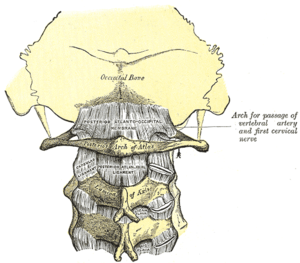Birds are singing, flowers are blooming, and the temperature is on the rise—we think it’s safe to say that spring has arrived in Portland. Unfortunately, here at BodyQuirks we’ve seen four clients recently that are still a bit frozen—but not from the winter. These clients are suffering from repetitive motion shoulder issues, or “frozen” shoulder—the kind of painful and limiting condition that can keep you from fully enjoying these beautiful April days and even make everyday tasks like dressing and driving painful, difficult, or, in extreme cases, impossible. Luckily, we’ve been able to help these clients through massage and whole body vibration (WBV).
What is frozen shoulder?
It’s just an injured shoulder, no big deal, right? Wrong. If your shoulder is out of whack it can change the way you move. Before you know it your whole body is out of alignment. If you let it go unattended for too long the joint will become frozen and lose mobility.
“Frozen shoulder, also known as adhesive capsulitis, is a condition characterized by stiffness and pain in your shoulder joint,” as defined by the Mayo Clinic. It occurs when the connective tissue in the shoulder joint hardens due to scarring, restricting movement in all directions even when a doctor attempts to move it. Over time, symptoms gradually get worse. For some, the pain is worse at night making sleep difficult. Worse yet, it can take up to three years to fully resolve, highlighting the importance to act sooner rather than later.
Individuals most at risk of frozen shoulder are forty and older, women, people with certain diseases such as diabetics, heart disease, and Parkinson’s, those who are recovering from a serious medical procedure or condition (stroke, mastectomy, broken arm) that has restricted their arm’s movement, or anyone experiencing restricted arm motion over a long period of time for any reason.
The Mayo Clinic outlines the following stages of development:
• Freezing stage. Any movement of your shoulder causes pain, and your shoulder’s range of motion starts to become limited.
• Frozen stage. Pain may begin to diminish during this stage. However, your shoulder becomes stiffer, and using it becomes more difficult.
• Thawing stage. The range of motion in your shoulder begins to improve.
Alleviating frozen shoulder
Once a shoulder becomes frozen it is very painful to open it up again. Of course massage will help, but there is much you can do to help it heal on your own too. This video shows several things exercises to start mobilizing the shoulder with little to no pain.
Using WBV also helps because it passively mobilizes the joint. Both a standing position, as well as a seated one (with your hands behind you) is effective. You can control the amount of weight that you rest on the shoulders to help open the joint up.
Don’t let your range of movement limit your range of happiness in life. With consistent effort you can recover from frozen shoulder.
If you’re dealing with a limited range of motion due to a stiff or frozen shoulder and you’d like us to loosen it up with massage, or if you’d like to try WBV to see how it can help, give us a call at 503-233-9030 to schedule an appointment. We’d be more than happy to chat and answer any questions you may have. With our multi-modality approach to massage, we’ll have you rotating that shoulder before you know it, or try out WBV for FREE and feel the results for yourself.
Learn about relieving neck and shoulder pain caused by computers.






One thought on “What to do About Frozen Shoulder”
This condition brings back many memories for me I had it bilateral both shoulders frozen and just woke up with limited movement in both shoulders and much pain. My Dr. at first didn’t know what was going on thought I hurt them with exercise…NOT. Saw P.T and it became clear it was Adhesive Capsulitis. Western medicine wanted to do surgery on both shoulders and break up the capsulitis. I read about the procedure and certainly wanted to do alternative therapy at the time it was before WBV to bad for me. I did Bowen’s therapy for 6 months husband was a nurse and did the particular type of massage which is very painful but effective I had full motion within the year of doing various exercises. I could not raise either arm past my waist and had to have assistance for everything all daily activities bath, dressing etc.
How wonderful to have the option of WBV and blessed with the very knowledgeable Tara and Esther as coaches.
Thank you for this article and for your updates so informative.
Diane